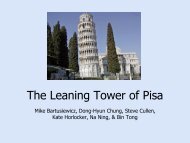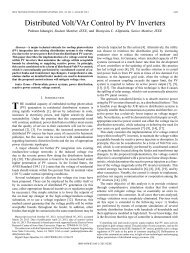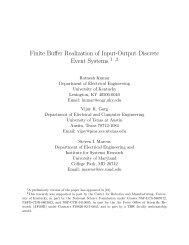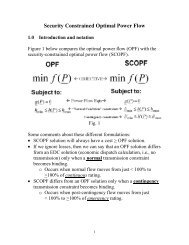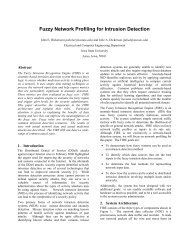Linearized Analysis of the Synchronous Machine for PSS Chapter 6 ...
Linearized Analysis of the Synchronous Machine for PSS Chapter 6 ...
Linearized Analysis of the Synchronous Machine for PSS Chapter 6 ...
You also want an ePaper? Increase the reach of your titles
YUMPU automatically turns print PDFs into web optimized ePapers that Google loves.
and we see that <strong>the</strong> damping can go negative <strong>for</strong> fast (small T A )-<br />
high gain (large K A ) excitation systems under heavy loading<br />
conditions! And this explains <strong>the</strong> effect observed in Fig. 8.<br />
So what do we do about this?<br />
Solution 1: Limit K A to as high as possible without causing<br />
undamped oscillations. But high-gain, fast response excitation<br />
systems are good <strong>for</strong> transient (early-swing) instability! And so we<br />
would ra<strong>the</strong>r not do this.<br />
Solution 2: Provide a supplementary torque component that <strong>of</strong>fsets<br />
<strong>the</strong> negative damping torque caused by <strong>the</strong> excitation system.<br />
Basically, <strong>the</strong> idea is to push (rotate <strong>for</strong>ward) our torque vector<br />
back into <strong>the</strong> upper-right quadrant. Thus we need to phase-advance<br />
<strong>the</strong> torque vector by between 20 to 90 degrees. We will introduce a<br />
supplementary torque that does this, denoted by ΔT pss , as indicated<br />
in Fig. 10 below.<br />
Fig. 10<br />
16







